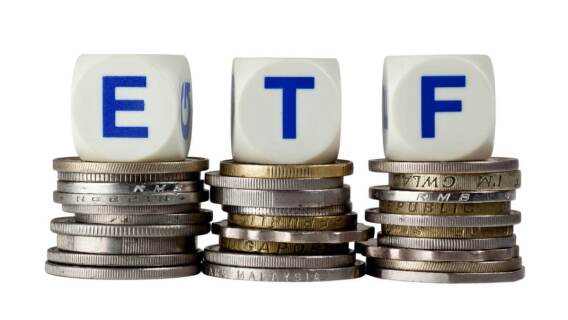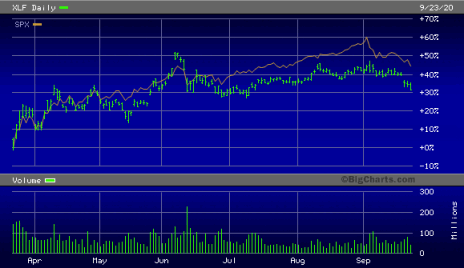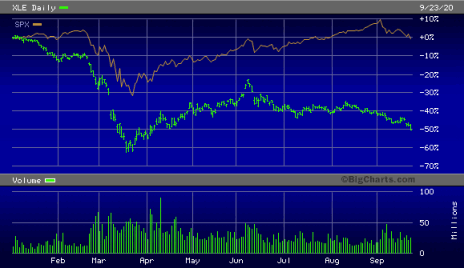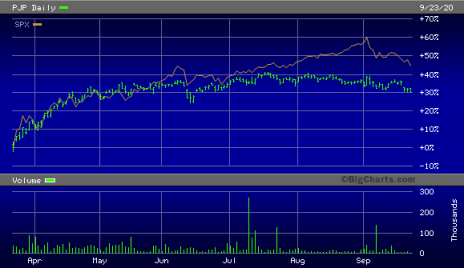The arrival of the fall season often heralds an increase in stock market volatility. Here we’ll look at the market’s seasonal bias and how this year’s autumn could negatively impact three key sectors: energy, financials and healthcare. And I’ll tell you specifically which sector ETFs to avoid.
As you’re probably aware, there’s a well-documented historical tendency for the September-October period to witness above-normal choppy trading action. Jeffrey Hirsch of Stock Trader’s Almanac has observed that October “sits at a juncture in the market’s calendar where things tend to get turned around.”
While October marks the end of the stock market’s so-called “Worst Six Months” and the start of the “Best Six Months,” it has also witnessed its fair share of declines – most notably the infamous financial crises of 1929, 1987 and 2008. October’s bad reputation has been variously explained as being the result of late-third-quarter “window dressing” by portfolio managers preparing for year’s end. Others point to the late-October deadline for mutual funds (which must sell losing equity positions in order to offset gains in other assets and reduce tax liabilities).
[text_ad]
Then there are presidential election year Octobers, which tend to be particularly virulent for markets (as the election-year declines of 2008 and 2016 attest). According to Hirsch, “In election years, October ranks dead last” among the 12 months in terms of stock market performance (though he adds that, if you simply exclude October 2008, the month’s ranking improves to mid-pack). But whatever the reason for October’s bad reputation, it’s important to realize that the month can be dangerous for investors who aren’t properly prepared for the increased volatility it often brings.
One sign that this October could witness above-normal volatility is the recent trend toward increasing internal weakness in the broad market – especially the Nasdaq.
Here at Cabot, one method we use to gauge the extent of short-term weakness is the Two Second Indicator. This indicator simply looks at the number of stocks on both major exchanges that are making new 52-week lows on a daily basis. When the number of NYSE or Nasdaq stocks making new lows is above 40 for several consecutive days, it’s a pretty good indication that there’s concentrated selling pressure somewhere in the market.
Unfortunately, this has been the case lately, as there have been a number of days in September when the new 52-week lows on the Nasdaq alone have been well above 40. Digging deeper, we find three major areas where weakness has been fairly persistent: energy, financials (mainly bank stocks) and healthcare (particularly pharmaceuticals).
Breaking down these lagging market segments even further, we can see some clear signs of poor relative performance (that is, how well a stock or industry performs versus a benchmark like the S&P 500 Index).
3 Sector ETFs to Avoid
Sector ETF to Avoid: Financial Select Sector SPDR ETF (XLF)
Among the weakest of the major segments right now are the banks. Bank stocks are being hampered by ultra-low interest rates and tightening lending standards in the midst of this coronavirus-caused recession. (Dividend caps and share buyback suspensions have been an additional headwind for the group).
Below is a chart showing the performance of the Financial Select Sector SPDR ETF (XLF) – a popular financial industry tracker – versus the S&P 500. This chart illustrates the underperformance of the bank stocks in the face of recent obstacles. And with so many bank shares piling up on the new 52-week lows lists for both the NYSE and Nasdaq, conservative investors might consider avoiding heavy commitments to the banks heading into October.
Sector ETF to Avoid: Energy Select Sector SPDR ETF (XLE)
The next underperforming group worth mentioning is energy. Oil and gas shares have been relentlessly hammered in 2020, thanks to an unprecedented (and unlikely) confluence of negative economic and political events. Shown here is the Energy Select Sector SPDR ETF (XLE), which has drastically underperformed the S&P 500 all year. This graph punctuates the message that investors should probably steer clear of energy stocks until oil demand improves substantially.
Sector ETF to Avoid: Invesco Dynamic Pharmaceuticals ETF (PJP)
The third and final underperforming group is found within the healthcare sector. This one might surprise you, as drug stocks have been heavily in favor on Wall Street this year – particularly the drug makers that are leading the race to develop a COVID-19 vaccine. More than a few high-profile biotech and pharmaceutical stocks continue to make new highs, so there’s definitely some resilience within the broad healthcare sector (which makes it difficult to denounce it as being categorically weak).
Yet there’s a definite, if small, undercurrent of weakness within the pharma industry. This can be seen by the persistent tendency for pharma names to populate the Nasdaq new 52-week lows list in recent weeks. There have been times in the last month, in fact, where up to a third of the Nasdaq daily new lows were drug stocks. (Reasons for weakness within this industry range from election-year concerns over drug pricing to perceived failures in the COVID vaccine race).
Whatever the reasons are, it’s important to be aware that there are many biopharma stocks that simply aren’t keeping up with the industry benchmark. The Invesco Dynamic Pharmaceuticals ETF (PJP) is one way of tracking the overall trajectory of stocks in this group. As the following chart suggests, the strength of the leading pharma stocks hasn’t been sufficient to keep the overall group in line with the S&P 500.
The potential danger here is that this (admittedly small) undercurrent of weakness in the biopharma stocks could expand to the rest of the healthcare sector in October. For the sake of comparison, there was a similar increase in new 52-week lows among drug companies in the weeks leading up to this year’s February-March sell-off. That’s not to say that history will repeat itself this time around. But it wouldn’t hurt to remain alert and avoid taking on too many commitments in the healthcare sector – at least until the relative performance of the PJP sector ETF improves and drug stocks stop showing up on the Nasdaq new lows list.
In conclusion, it should be remembered that while October can be a hyper-volatile month for equities, it also marks the end of the so-called “Worst Six Months” for stocks. Moreover, its passing heralds the start of the “Best Six Months” for stocks. So, while there are some potential pitfalls in October, there should be some excellent intermediate-term opportunities ahead once the market’s latest seasonal weakness has been completely worked off.
If you want help finding those opportunities, I highly recommend subscribing to our Cabot Top Ten Trader advisory, where every week chief analyst Mike Cintolo provides you with 10 of the market’s strongest growth stocks from both a technical and a fundamental perspective.
To learn more, click here.
[author_ad]




